Understanding Aviary Netting: What It Is and Its Importance
Aviary netting is a specialized material designed to enclose areas where birds are kept, providing a safe environment for them to thrive. The primary function of aviary netting is to safeguard birds from potential predators while allowing for an unobstructed view for visitors in settings such as zoos, bird parks, and private aviaries. This dual purpose significantly enhances the experience of both the birds and the observers, facilitating a harmonious balance between nature and human engagement.
High-quality aviary netting materials, such as stainless steel wire rope mesh, are engineered to meet rigorous safety standards while offering longevity in diverse environmental conditions. The durability of such materials is instrumental in ensuring the protection of birds from various threats, including larger animals and extreme weather. Unlike less robust alternatives, stainless steel wire rope mesh resists wear and tear over time, effectively minimizing the risk of damage that could jeopardize the well-being of the birds it shelters.
Moreover, the strength and flexibility of high-grade aviary netting allow for the construction of expansive enclosures without compromising on safety. This means that birds can engage in natural behaviors without the constant fear of predation, promoting a healthier lifestyle. Additionally, the aesthetic appeal of these netting solutions plays a crucial role; visitors can observe the birds clearly without obstructions, enhancing the educational and entertainment value of the facility.
Overall, the use of quality aviary netting is paramount in establishing a secure, open environment for avian inhabitants. It blends functionality with visual appeal, accentuating the significance of ensuring safety and comfort for birds while offering an enjoyable experience for visitors.
Why Choose Stainless Steel Wire Rope Mesh for Aviary Netting
When selecting aviary netting, it is crucial to consider materials that provide the best safety and comfort for birds. Stainless steel wire rope mesh has emerged as an exceptionally effective choice among bird enthusiasts and professionals alike. One of the primary advantages of this material is its impressive corrosion resistance. Stainless steel is specially formulated to resist rust and deterioration, making it particularly suitable for outdoor environments where exposure to moisture is commonplace. This longevity ensures that aviary structures remain intact and secure over time, safeguarding the inhabitants within.
Beyond corrosion resistance, the strength of stainless steel wire rope mesh is another compelling reason for its popularity in aviary netting. The tensile strength of stainless steel enables the creation of sturdy enclosures that can withstand external pressures, such as wind or snow, as well as potential impact from the birds themselves. This strength minimizes the risk of breaches, offering peace of mind to aviculturists prioritizing the safety of their birds.
Flexibility is yet another beneficial characteristic of stainless steel wire rope mesh. This material can be easily manipulated into various shapes and configurations, making it adaptable for diverse aviary designs. The ability to customize sizes and layouts enhances the functionality and aesthetics of aviaries in both personal and professional settings.
Comparatively, traditional materials such as plastic or nylon netting may lack the durability and resilience provided by stainless steel. While they might initially be less expensive solutions, their shorter lifespan and susceptibility to wear and tear often result in higher replacement costs over time. In contrast, investing in stainless steel wire rope mesh for aviary netting may initially appear more costly, but its longevity and low maintenance requirements make it a cost-effective solution in the long run, particularly for zoos and bird parks where safety and durability are paramount.
Factors to Consider When Purchasing Aviary Netting
When considering the purchase of aviary netting, several critical factors must be taken into account to ensure the safety and comfort of the birds it will enclose. One of the foremost aspects is the dimensions and specifications of the netting. It is essential to measure the area of the aviary accurately and select netting that adequately covers the designated space while allowing for the natural movement and flight of the birds. Oversized netting may pose a risk of entanglement, while undersized netting could compromise the enclosure’s integrity.
Additionally, the weight load capacity of the netting should not be overlooked. Depending on the type of birds housed, heavier birds may require netting that can withstand greater physical stress. Hence, it is advisable to check the manufacturer’s specifications for load ratings to prevent sagging or tears over time. Selecting durable materials, such as polyethylene or nylon, can provide additional safety and longevity for the aviary setup.
Installation processes also play a crucial role in ensuring the effectiveness of aviary netting. Different products may come with varying installation guides or requirements, so it is imperative to consider whether a particular type of netting is compatible with the chosen structure. Ease of installation can help mitigate potential installation errors and further secure the aviary.
Moreover, regular maintenance needs should be taken into account. Some netting materials may require more upkeep than others, such as cleaning or replacing due to environmental wear and tear. Understanding the maintenance requirements will aid in selecting netting that aligns well with the owner’s commitment to ensuring an optimal living environment for the birds.
Lastly, it is vital to consider the specific needs of the bird species that will inhabit the aviary. Different birds have varying behaviors, flight patterns, and physical needs that dictate the type and style of netting necessary. By comprehensively evaluating these factors, potential buyers can make informed decisions tailored to their aviary requirements, ensuring a safe and comfortable habitat for their birds.
Cost Analysis: Where to Find Quality Aviary Netting for Sale
When considering the purchase of aviary netting, it is essential to conduct a thorough cost analysis to ensure that you invest wisely. The prices for aviary netting can vary significantly based on factors such as material quality, size, and the supplier. Generally, high-quality netting is more durable and provides better protection against predators and environmental factors, which can justify the initial investment in the long run.
Suppliers of aviary netting typically offer a range of options, from affordable alternatives to premium-grade materials. Cheaper options may seem appealing; however, they often compromise in terms of durability and safety. It is advisable to prioritize quality over cost, as inferior netting can lead to increased maintenance costs and potentially jeopardize the well-being of the birds.
To find the best aviary netting for sale, it is beneficial to search online using specific phrases such as “high-quality aviary netting,” “premium bird protection netting,” or “affordable aviary netting suppliers.” These key terms can guide potential buyers to reputable retailers. Websites like Amazon, eBay, and specialized pet supply stores often have competitive pricing and a variety of customer reviews that can aid in assessing the product quality.
It is also useful to compare prices across multiple platforms. Some suppliers may offer discounts for bulk purchases or seasonal sales, making it easier to secure high-quality netting at a lower cost. Additionally, evaluating customer feedback can provide insights into the long-term performance of the netting, highlighting whether it remains intact after prolonged exposure to the elements.
In conclusion, while searching for aviary netting for sale, take the time to assess both the cost and quality. By doing so, you can ensure a safe and comfortable habitat for your birds, ultimately leading to a more rewarding experience in aviculture.
Installation and Maintenance Tips for Long-lasting Aviary Netting
When it comes to Installing aviary netting made from stainless steel wire rope mesh, taking a systematic approach is essential for achieving optimal performance and longevity. Begin by gathering all necessary materials and tools, including the netting itself, support posts, brackets, and appropriate fasteners. It’s advisable to determine the dimensions of your aviary and carefully measure the area where the netting will be fitted. Once you have a clear blueprint, proceed to install the support posts securely in the ground at designated intervals.
Once the posts are set, lay the stainless steel wire rope mesh over the frame, ensuring it extends beyond the edges to prevent birds from slipping through. Fasten the netting to the posts using brackets or clips, making certain that it is taut to maximize strength while minimizing sagging. It is important to regularly inspect the integrity of the netting; any signs of fraying, rust, or wear should be addressed immediately to ensure bird safety.
Maintenance is equally crucial for ensuring the longevity of your aviary netting. Regular inspections—ideally performed on a monthly basis—can help identify typical issues such as corrosion or knot loosening before they become significant problems. Depending on environmental factors, such as humidity and exposure to sunlight, consider applying a protective coating to enhance the durability of the stainless steel mesh. Additionally, clean the netting periodically using a gentle detergent and soft brush to remove debris, which can contribute to wear and tear over time.
Finally, it is important to remain vigilant against potential intruders. Birds, particularly smaller species, can become prey to larger birds or rodents. Reinforcements, such as additional mesh layers or stronger fastening techniques, can deter these risks and maintain a secure environment for your aviary inhabitants. Following these installation and maintenance tips will ensure your aviary netting remains safe and comfortable for your birds.
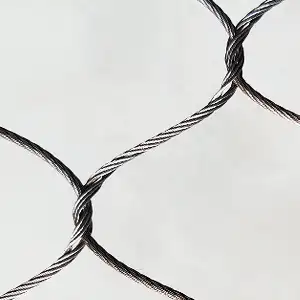



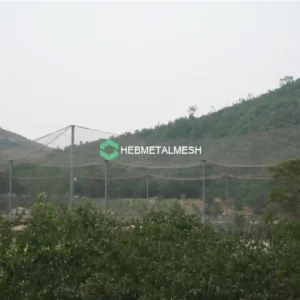
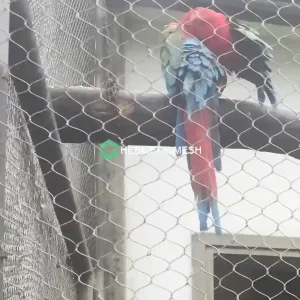
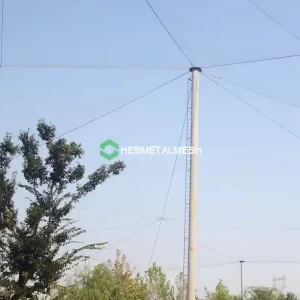
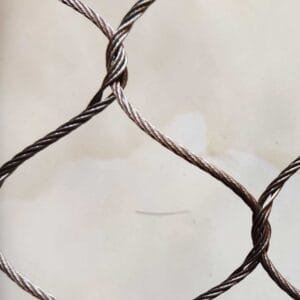
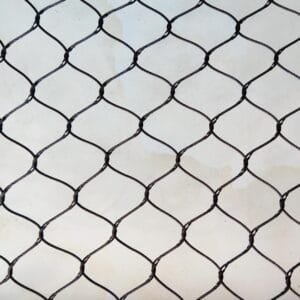

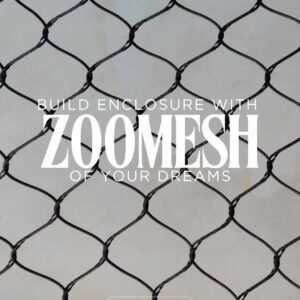
Reviews
There are no reviews yet.